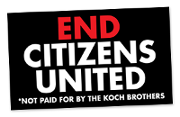Biblio
Filters: First Letter Of Last Name is C [Clear All Filters]
(1998). Your Life's Work.
"Most of the problems in the workplace today could be resolved by the unanimous application of the positive feelings of love, compassion, and respect." (p. 137)
(2001). The Working Life: The Promise and Betrayal of Modern Work.
"The flexible workplace can be a solution to the time problems families face, or it can be the root of their problems. We have gone from moving our homes into the organization to moving the organization into our homes. It again raises the question of whether life should be part of work or work part of life. Where do you go at the end of the day when you work at home?"
(1998). Work & Rewards in the Virtual Workplace: A "New Deal" for Organizations and Employees.
"Thinking of work as if it were attached to time and space limits productivity." (p. 25)
(2011). Why Your Boss Is Wrong About You.
"Under such a system [of performance appraisal], in which one's livelihood can be destroyed by a self-serving boss trying to meet a budget or please the higher-ups, what employee would ever speak his mind? What employee would ever say that the boss is wrong, and offer an idea on how something might get done better?
Only an employee looking for trouble."
Only an employee looking for trouble."
(1994). Why Climb the Corporate Ladder when You Can Take the Elevator? : 500 Secrets for Success in Business.
"Many corporations encourage independent thinking right up until the day they fire you for it." (p. 382)
(2001). What Do You Want to Do When You Grow Up?: Starting the Next Chapter of Your Life.
"Job burnout, write Maslach and Goldberg, with its feelings of frustration, ineffectiveness, or failure, is 'a particularly tragic endpoint for professionals who entered the job with positive expectations [and] enthusiasm.'" (p. 56)
(1999). Trust and Betrayal in the Workplace.
"Transformative trust occurs when the amount of trust within a team or organization reaches a critical point and increases exponentially, becoming self-generating and synergistic. Four core characteristics are usually present: conviction, courage, compassion, and community." (p. 155)
(1996). Surviving Your Boss: How to Cope With Office Politics and Get on With Your Job.
"In any situation of change, conflict, or misunderstanding there is anger. Anger frequently masks fear. Fear in situations of conflict and change is very predictable. And with anger there is usually blame, for oneself and for others. Anger is one of the most destructive forces in the workplace today. It is ultimately a fatal emotion. Studies show that about 20 percent of us have hostility levels high enough to be dangerous—to our own health and to those around us. Hostility level is associated with increased smoking, drinking, eating, and weight gain. Hostility has long been a well-established contributor to coronary risk and heart disease, as well as myriad other illnesses.
It's likely you have experienced the relationship between anger, depression, resentment, and low self-esteem. You know about the aches and pains that come from tension. The fatigue and lack of joy that ensue as days are increasingly filled with the burden of frustration and suppressed rage." (p. 96)
It's likely you have experienced the relationship between anger, depression, resentment, and low self-esteem. You know about the aches and pains that come from tension. The fatigue and lack of joy that ensue as days are increasingly filled with the burden of frustration and suppressed rage." (p. 96)
(1994). Success through teamwork: a practical guide to interpersonal team dynamics.
"Not all team members are equally motivated to participate and be productive. In addition to motivating productive members, you must motivate average or nonparticipating members to increase their commitment to the team.
The following strategies can help you turn nonparticipating team members into active participants:
* Seek their advice
* Make them teachers
* Involve them in presentations
* Delegate 'star projects' " (p. 85)
The following strategies can help you turn nonparticipating team members into active participants:
* Seek their advice
* Make them teachers
* Involve them in presentations
* Delegate 'star projects' " (p. 85)
(1985). Stress Management: A Comprehensive Guide to Wellness.
"Are You Sitting on a Two-Legged Stool?
Most of us are striving for a happy and meaningful life. Balance is needed to achieve and maintain such a life. Balance means that you avoid building your life around one person or one thing, no matter how wonderful it may seem. If you do, no matter who or what it is, losing it could be devastating." (p. 186)
Most of us are striving for a happy and meaningful life. Balance is needed to achieve and maintain such a life. Balance means that you avoid building your life around one person or one thing, no matter how wonderful it may seem. If you do, no matter who or what it is, losing it could be devastating." (p. 186)
(1992). Small Decencies : Reflections and Meditations on Being Human at Work.
"Our accomplishments are not too simple, mundane, and ordinary to merit a moment of glory. We deserve to have our fellow workers sing our song. We owe them a poem in their honor." (p. 160)
(1997). Slowing down to the speed of life : how to create a more peaceful, simpler life from the inside out.
"See forgiveness as a process, and know that it will get easier and easier each time the memory comes to mind. If you see the value of forgiveness and are willing to forgive, each time the memory comes to mind while you are in a state of healthy psychological functioning, the experience will be a little less painful." (p. 135)
(1999). Since Strangling Isn't an Option... : Dealing with Difficult People–Common Problems and Uncommon Solutions.
"It isn't always easy to have compassion for people who are in positions of power over us. We tend to think of them as having achieved something, or as having been given something we have not. Instead of thinking of your boss as a boss, think of her as a person. It's easier, and more productive, for two human beings to talk than it is for a boss and a subordinate to deliberate." (p. 39)
(1997). The Seven Fatal Management Sins: Understanding and Avoiding Managerial Malpractice.
"Every employee should be part of the corporate family. While that may be the case in some organizations, in other organizations employees are numbers—objects to be utilized and manipulated. Motorola stresses that the organization is a 'family' with human and democratic values, where no one can be fired without approval from the top." (p. 165)
(2003). Scapegoats at Work: Taking the Bull's-eye Off Your Back.
212. Abstract
"There is almost always some truth to the accusations against a scapegoat, but many other sins are laid against their name that rightly belong elsewhere. Punishing or excluding the scapegoat serves to relieve the system of the need to examine the structural problems of the system and of all concerned to explore their own participation in the problem. The ability of scapegoating to provide simple apparent 'solutions' to complex problems is part of its power." (p. 11)
(2012). The Rise of the New Groupthink.
"Research strongly suggests that people are more creative when they enjoy privacy and freedom from interruption."
(1994). Reengineering the Corporation: A Manifesto for Business Revolution.
"We found that many tasks that employees performed had nothing at all to do with meeting customer needs—that is, creating a product high in quality, supplying that product at a fair price, and providing excellent service. Many tasks were done simply to satisfy the internal demands of the company's own organization." (p. 4)
(2001). The Rebel Rules: Daring to be Yourself in Business.
"Most people never make this connection [that their creative abilities are an asset]. They jump on society's bandwagon, averting the risk of repeating some painful childhood memory. They continue to fear and avoid dangers that, while once all too real, have no relevance in their lives today. Sometimes we even try to hide our youthful talents and gifts for fear they're not acceptable. The net result is a disconnected life—one that is too familiar to many of us." (p. 29)
(1980). Quality Is Free.
"Objectivity comes with not placing the blame for problems on individuals. Aim the questions and probing at the job. The job is what failed, not the individual. It may be that the two are imperfectly matched and you have to change one or the other. Either way, the individual has the chance to improve another time, under different conditions." (p. 75)
(2002). Programming Jakarta Struts.
(1987). Programming in Prolog.
(1992). Principle Centered Leadership.
"If we use an authoritarian or benevolent authoritarian approach to problem-solving, we slip into a kind of condescending or vertical communication pattern. If people sense that we are 'talking down' to them or that our motive is to manipulate them into making a change, they will resist our efforts." (p. 222)
(1997). Organization Development and Change.
"It is important to emphasize that people who have low growth or social needs are not inferior to those placing a higher value on these factors. They are simply different. It is also necessary to recognize that people can change their needs through personal growth and experience. OD practitioners need to be sensitive to individual differences in work design and careful not to force their own values on others." (p. 357)
(C)2014 CC-BY-NC 3.0, workcreatively.org











 ]
]